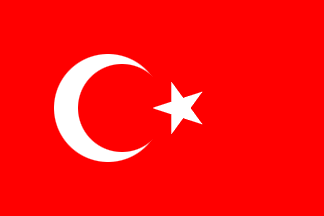
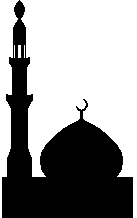
 |
 |
Turkey is a very ancient country. It was once the seat of the Ottoman Empire, an Islamic entity that for hundreds of years ruled the Eastern Mediterranean, the Balkans, the Levant, the shores of the Red Sea and much of the coast of North Africa. However its history goes back at least 11,000 years - see the prehistory section below. Ottoman territorial expansion peaked circa 1566, but Ottoman influence still dominated the Middle East at the outbreak of the First World War. The following map shows both the all-time maximum geographical reach of that influence and the extent to which the empire had already contracted by 1914. It was at the start of the 1914-1918 conflict an empire in steep decline; an absolute monarchy in terms of constitution, deeply conservative in terms of intellectual and religious issues, and possessing an unmodernised army that proved to be incapable of defending its colonial territories. The story of the Ottoman military defeat is well told in the film Lawrence of Arabia (1962).
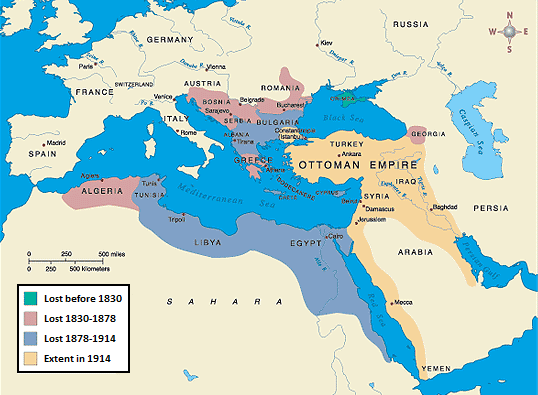 |
| The Ottoman Empire - Greatest extent and losses up to 1914 |
The provisions of the Treaty of Versailles (1919) created a number of problematic issues in the region that reverberate to this day. The Greeks, who had officially joined the victorious Allies in 1917, wanted the treaty to extinguish what remained of the Ottoman Empire and so eliminate their old enemy once and for all time. That was not to be, but the treaty-defined borders of the new state of Turkey failed to resolve the aspirations of the Kurdish people for their own homeland. Further south, in Syria, Lebanon and Iraq, sectarian divides within Islam were ignored by imposed new and highly artificial national boundaries. In many of these issues, a major deciding factor was a British aspiration to exert colonial control over the oil wealth of the Persian Gulf.
Modernisation of post-WW1 Turkey was driven forward by one man, Mustapha Kemal Atatürk (1881-1938). He created the foundations of a democratic and secular state that aspired to adopt western European norms and values of governance and trade, whilst maintaining Islam as its national religion.
Turkey remained neutral for most of the Second World War, nominally joining the Allies in the closing months of the conflict. However, no Turkish troops saw military action. Thus it was the First World War, not the Second, that determined the geographical extent and political stance of Turkey in the modern world.
Turkey has long aspired to become more closely linked with Europe. Formal application to become a full member of the European Union was made as long ago as April 1987, the application resulting in ‘candidate status’ being granted in 1999. But to date no progress has been made beyond Associate Membership of the EU. That came about as an automatic consequence of Associate Membership of the EU’s predecessor, the European Economic Community (EEC) – a status that Turkey had enjoyed since 1963. A major stumbling block to full membership of the EU has been the matter of Northern Cyprus (shown in red on the map below), territory that was the subject of a military invasion by Turkey in July/August 1974 and subsequent creation of a nominally independent state called the Turkish Republic of Northern Cyprus, recognised only by Turkey.
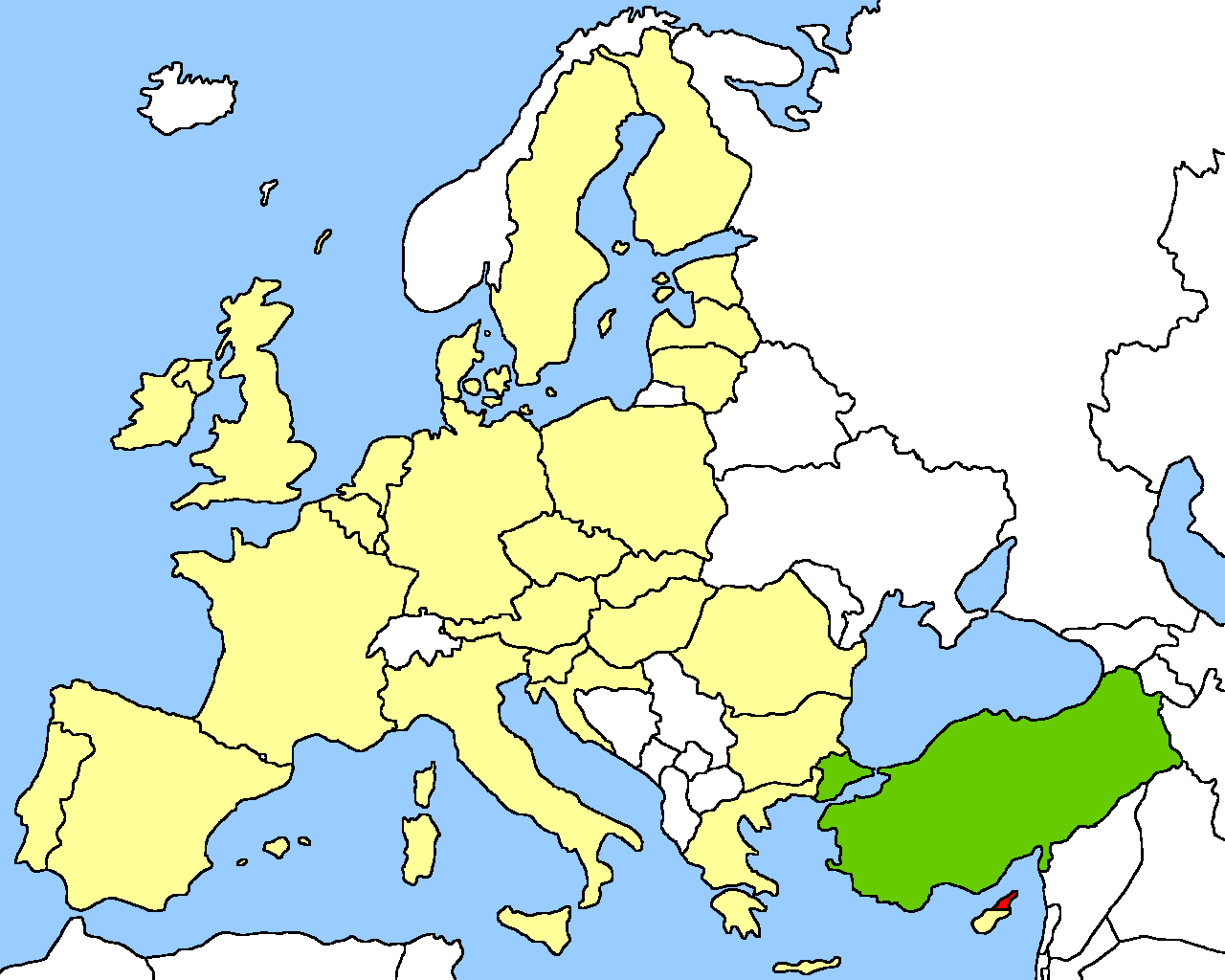 |
| Turkey - Location with respect to the European Union. Turkey has applied for full membership and has been granted candidate status, but further progress is slow (see main text). |
Prehistoric Turkey

|
Circumcision was practised in Turkey thousands of years before tha arrival of Islam. On our Art page is an image of a recently discovered statue of a man with a very clearly circumcised penis. This dates back 11,000 years. Historians describe him as handling his penis but to me it looks like he is just showing off. There is much less doubt about the man on the right of the above image, a frieze decorating a bench seat from Sayburç in southeastern Turkey, also dating back to about 9,000 BC. He is shown in detail on the right. Not as clear as the image on the Art page but he seems to have a fairly loose circumcision. Why this was a suitable image for a large, and presumably public, bench seat is less clear! Courtesy Artnet News, December 8, 2022. Photo by K. Akdemir. |
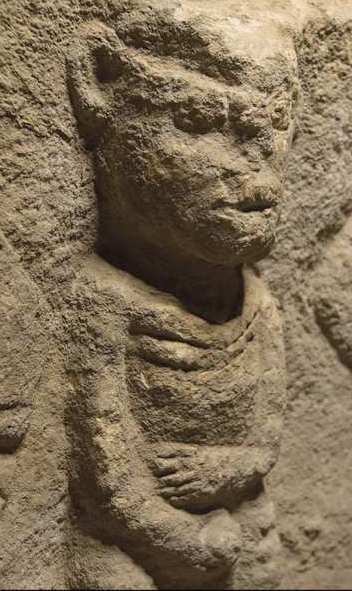
|
Imperial grandeur flooded the streets of Constantinople during celebrations for the circumcision of the Sultan’s sons or the marriage of his daughters. Like the selamlik, the celebrations were more public than in Western monarchies. On 27 June 1530 Suleyman the Magnificent, at the height of his power and glory, started the celebrations for the circumcision of his sons Mustafa, Mehmed, and Selim. Tents were erected in the largest open space in the city, the old Roman hippodrome. Protected from rain by a green covering, with interiors sewn with tulips, roses, and carnations embroidered in silver and gold, and held upright by gold-plated poles, the Sultan’s tents were palaces of silk and canvas. His throne was placed under an awning of cloth of gold. The 32-year-old Sultan was surrounded by the dignitaries of the empire, headed by the Grand Vizier Ibrahim Pasha, and attended by captive princes.The Janissaries
Where the future Empress Theodora had exposed herself to cheering Byzantine crowds, jugglers and buffoons entertained the more decorous subjects of the Ottoman Sultan. Where teams of Blues and Greens had competed in chariot races, soldiers fought sailors in simulated combat. Tightrope walkers walked along cords strung between the Obelisk of Thutmose III (1549–1503 BC), brought from Egypt and erected under Theodosius I in 390, and a stone pillar from the same reign. Presents of crystal, Chinese porcelain, Syrian damask, Indian muslin, and slaves from Ethiopia and Hungary, given to the Sultan by his viziers, Kurdish beys and foreign ambassadors, were displayed to the public. Poets recited works composed in honour of the occasion.
The claims of Islam were not forgotten. During contests of Koranic scholarship between ulema, one professor died of vexation at not being able to find the right words. On the eighteenth day, the Sultan’s sons were fetched from the old palace in the centre of the city: their circumcisions were performed in the palace which the Grand Vizier Ibrahim had built overlooking the Hippodrome (the present Museum of Turkish and Islamic Art). In celebration the Sultan gave kaftans to viziers and ulema. The public was fed on roast oxen, out of which rushed live foxes, jackals, and wolves in order to impress the crowd.
In 1582 the circumcision of Prince Mehmed, son of Murad III, was an affair of state, planned a year in advance. Senior officials were given special festive functions. The commander-in-chief of Anatolia, for example, was appointed superintendent of sherbets. Some 1500 copper plates and trays were made for the banquets. The palaces around the Hippodrome were restored to provide better seating, and viewing, for ambassadors from Samarkand, Persia, Georgia, Morocco, Venice, Poland, and the Holy Roman Empire, as well as for the ladies of the palace behind a grilled stand.
On 1 June the Sultan’s arrival opened the celebrations. Two innovations show the emergence of an urban ethos. All the guilds of Constantinople processed past the Sultan on his golden throne, at the rate of two or three a day. On horse-drawn floats they displayed their skill at a particular trade. One float showed a tiled hamam with men in black skirts performing ablutions and massage. Cooks went by showing sheep’s and bulls’ heads and feet, crying “Take it my dear, all greasy, all hot, all vinegared and garlicked!” Tar makers threw pitch and tar into the crowd and played ‘a thousand merry tricks of that kind’. Keepers of lunatic asylums led laughing and weeping madmen in gold and silver chains. A contingent of 150 boys covered in bits of glass flashed reflections of the summer sun back to spectators, to display the mirrormakers’ skill. Fireworks representing cities, churches, and unicorns were prepared with the help of a captured English engineer called Edward Webbe. The Sultan offered a series of banquets, one evening to the pashas, the next to the ulema, the third to his troops. A thousand plates of rice and twenty roast ox were prepared every evening for the people of Constantinople.
In a humble way, Jews and Christians joined in the celebrations. Both Greek and Armenian Patriarchs, as well as the Mufti and dervishes, made obeisance to the Sultan, blessing him with the words: ‘May God maintain Sultan Murad in long happiness!’ A mock battle in the Hippodrome pitted Muslims against Christians. Naturally the first won, and captured the Christians’ castle, out of which emerged four pigs - a contemptuous reference to Christians’ consumption of pork. The populace was regaled with Jewish comedies and dances. One hundred Greeks from Galata, in red jackets and Phrygian caps, with bells attached to their legs, performed lascivious dances from Alexandria. Some Christians (but not Jews) were so overcome by the occasion – or, according to a Christian source, by offers of money – that they held up their thumbs as a sign of readiness to convert to Islam. They were at once carried off to the palace to be circumcised.
The prince, the future Mehmed III, dressed in scarlet satin and white brocade, with heron plumes in his turban and a red ruby in his right ear, was circumcised on 7 July. The foreskin was despatched on a golden plate to the prince’s mother: his grandmother was sent the knife with which it was severed. The cutter was rewarded with 3000 gold coins, a golden bowl and ewer, thirty lengths of cloth, robes of honour and, subsequently, marriage to one of the Sultan’s daughters. Finally the Sultan returned to the palace on 22 July. The celebrations had lasted so long – fifty-five days – that the start of the campaigning season was delayed. Constantinople might have been another Capua, the city whose pleasures diverted Hannibal’s army from the attack on Rome.
In 1720 four of the Sultan’s sons were circumcised and two of his nieces married at the same time. Four nine-metre high nahils and forty small nahils were made for each prince. The celebrations on the Okmeydan, outside the city walls near Galata, lasted fifteen days and nights: five thousand other boys were circumcised at the same time. There was a procession of guilds past the Sultan, sitting in the Alay (Ceremonial) Kiosk built on the palace wall specifically to enable him to observe what was happening outside. Carriages were driven on tightropes between the masts of ships anchored in the Bosphorus.
Grandiose celebrations also marked the birth of a child to the Sultan.
From the sea walls of the palace cannon fired seven rounds for a boy, three for a girl, five times in twenty-four hours. Firmans announced the news to the rest of the empire. Processions escorted a jewelled cradle and cradle-cover through the streets of the city to the imperial palace. In the palace the bedroom of the mother was crowded with the wives of the most senior officials of the empire, who rose in respect when the cradle arrived.
The night sky also reflected the Sultan’s splendour. To mark dynastic weddings and circumcisions, and religious festivals such as the Prophet’s birthday, ships, mosques and palaces were illuminated by small lamps. Illuminated messages, strung between the minarets, spelt out: ‘My sovereign, may you live a thousand years!’ Boats with red, blue or green paper lanterns, looking like fireflies, turned the Bosphorus and the Golden Horn into a sea of fire.
The best looking and best born were educated in the palace school or a Pasha’s household. Eventually they entered government service. The others were given to the Turks and sent to farms in Anatolia to learn Turkish. Subsequently they worked as gardeners in the Imperial Palace, sailors in the Imperial navy, or on building sites in the city. Eventually they too joined the Janissaries. A force numbering some fifteen to twenty thousand, the Janissaries were the spearhead of the Ottoman army and the principal military and police force in Constantinople itself. They patrolled the walls, garrisoned the Seven Towers, enforced law and order, guarded the Patriarch and the Sultan himself.
Some Christian families were heartbroken to see their children ‘gathered’. There was a song:
Be damned, O Emperor, be thrice damnedMore worldly families were delighted to see their children secure a footing on the Ottoman career ladder. Slavery was less degrading in the Islamic than in the Christian world. Devshirme youths educated in the Sultan’s or viziers’ households had the chance to occupy the highest posts in the empire and thus provide for their relatives. ‘Slaves of the Gate’ were free from many of the legal restraints imposed on other slaves in matters of marriage and property.
For the evil you have done and the evil you do.
You catch and shackle the old and the archpriests
In order to take the children as Janissaries.
Their parents weep and their sisters and brothers too
And I cry until it pains me;
As long as I live I shall cry,
For last year it was my son and this year my brother.
Turkey today
Socially, Turkey today is a nation of two halves – urban and rural. The major cities are significantly westernised and secular, whilst the rural areas – especially in Anatolia (Asia Minor) – are under-developed and deeply religious. This is reflected in national politics, in the form of ongoing tensions between adherents to the legacy of Atatürk (favouring an entirely secular state) and those who aspire to a more theocratic system of government.
 |
Circumcision in Turkey : Incidence, motivation and ceremonial issues
Since the population of Turkey is predominantly Muslim, male circumcision is a matter of religious obligation. The local cultural norm is for circumcision to take place between the age of 5 years and the onset of puberty. Infant circumcision is less common. Delay until after puberty is regarded as being both un-Islamic and indicative of neglectful parenting. Some circumcisions take place communally at dedicated “circumcision palaces” in urban areas, or in village halls in more rural communities. Candidates for circumcision in such settings are often dressed in special ceremonial robes, as part of a lavish coming-of-age ceremony. |
Turkey as a source of circumcision clamps and other instruments
Two designs of circumcision clamp have been developed in Turkey, the KirveKlamp and the Ali'sKlamp.Government oversight of circumcision services in Turkey
With a population now approaching 80 million (2012 estimate) of whom 10.7 million are males aged 14 or under, it can be anticipated that about ¾ million male circumcisions take place annually within the country’s borders. Such a workload would strain any system of healthcare provision. But the same demand, if left to lay practitioners lacking formal training, could lead to a significant number of highly unsatisfactory outcomes.
Turkey has long had laws specifically governing circumcision; law No.1219 on the Practice of Medicine and Related Arts was issued on 14 April 1928. That law defines the legal standards of competence (the required qualification) and the standards of practicing medicine and the related arts for physicians, dentists, midwives, nurses and (separately categorised) “health clerks performing circumcision”.
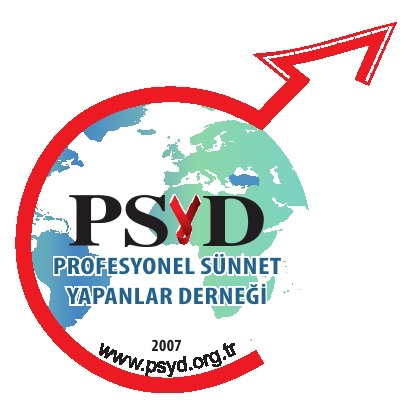 |
In 2007, Doctor Ali Canoğlu (developer of the Ali'sKlamp) set up an organisation called PSYD (Profesyonel Sünnet Yapanlar Derneği - in translation the Professional Circumcisers Association), with the aim of creating an improved system for accrediting and monitoring Turkey’s specialist circumcisers, who generally speaking have sufficient medical training to conduct the procedure safely whilst not being fully qualified as MDs. The intended result was a cadre of 500 or so highly experienced practitioners, complete with its own training and registration/accreditation processes along with a reporting system for dealing with adverse events. | |
Logo of the PSYD |
The proposal appears not to have found favour either with the Turkish authorities or with the Sünnetçiniz. Reportedly a mere 10% of those working as full-time circumcisers voluntarily signed up as members of PSYD and the Association now (July 2013) appears to be moribund. Current government policy is to introduce a new law in 2015 restricting circumcision services to fully-qualified MDs. Quite how the government health authorities propose to deal with the resulting workload and why they wish to deploy scarce, over-skilled resources in this way is unclear. Circlist takes the view that circumcision is an issue that needs a specialist professional body, along the lines commonly found regulating chiropody and podiatry. Abandoning the PSYD concept looks like an opportunity lost.
Turkish circumcision videos
Turkish culture has few inhibitions regarding the depiction of circumcision; normal standards of modesty are suspended for the duration. In consequence, numerous videos are to be found on websites such as YouTube. Circlist recommends the following. Note that you may need to sign into YouTube as an adult in order to view some of these items.
| YouTube video of a pubescent boy being circumcised by Sünnetçin Ali Akyüz whose clinic is located in Bayrampasa, close to Istanbul’s Atatürk airport. Method: Forceps guided thermocauter with supplementary suturing. Somewhat unusually, two cuts are made in order to achieve the required tightness. This video illustrates well-practiced skills that are in danger of being lost if the proposed new law limiting circumcision work to fully-qualified MDs is implemented. The video has no sound track. | ||||
| YouTube video of younger boys being circumcised at the Elif Circumcision Centre, Ankara (Dr. Mustafa Demirelli), showing comparative circumcisions using SmartKlamps (clear tubes) and Ali'sKlamps (green-tinted tubes). A small portion of the footage appears to come from the original SmartKlamp training video made in the late 1990s in The Netherlands. Voiceover commentary is in Turkish. | ||||
| YouTube video of a Turkish boy being circumcised in his own home by an unknown operator. Method: Forceps-guided cut using a scalpel blade, apparently without anaesthetic, cautery or suturing. The wound is closed with nothing more than a compression bandage. This footage illustrates where there may be room for improvement in the training of lay practitioners of circumcision, as envisaged by PSYD. For example, only one circumciser is present, whereas the recommendation is for a competent assistant also to be in attendance. Sound track is in Turkish. |
![]() The Turkish community in Germany
The Turkish community in Germany
Wikipedia
Medical Law in Turkey, Sert G., Güven T. and Görkey Ş.
Kluwer Law International : Alphen-ann-den-Rijn, 2011, p.25.
Maps courtesy of maps.com and www.youreuropemap.com.